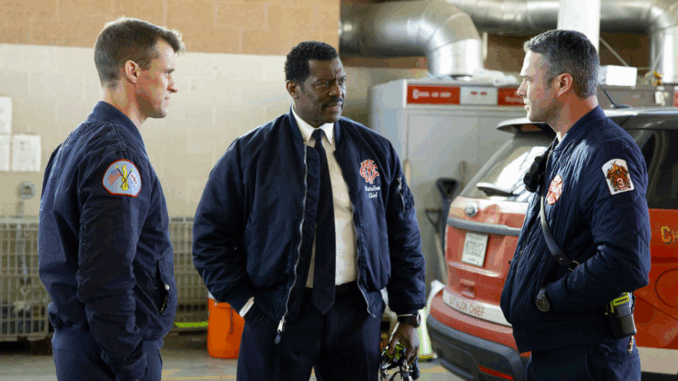
Episode 11, The Longest Bell, will likely go down as one of the most devastating episodes in Chicago Fire history. The fire at Edison Elementary wasn’t just another emergency—it was a moral crucible that left everyone at Firehouse 51 shattered.
What started as a routine alarm turned into a nightmare. A structural collapse, an electrical fire, and outdated building codes combined in a perfect storm that cost three children their lives. The episode doesn’t shy away from the horror—it confronts it directly, with long, silent scenes and raw performances.
For Violet, already grieving the loss of Hawkins, the parallels were unbearable. She hesitated briefly in the stairwell—a moment that didn’t cause the tragedy, but one she can’t stop replaying in her head. The show doesn’t blame her, but it doesn’t absolve her either. This is Chicago Fire at its most nuanced.
Behind the scenes, the production team built an entire school hallway that could be collapsed on cue. Director Reza Tabrizi revealed in interviews that they shot the fire sequences over three days, using real flame and over 50 background actors. “We built the set just to break it,” he said. “And we broke the audience too.”
But the episode isn’t only about death. It’s about guilt, resilience, and what it means to keep showing up. Herrmann’s speech at the end—delivered to a silent classroom during a memorial—was a gut punch. “We ring the bell, even when no one hears it. Because that’s our job. We show up.”
It was a haunting, unforgettable hour of television. And it proved that Chicago Fire, even after 14 seasons, still knows how to stop your heart.
